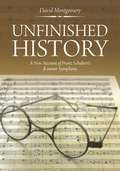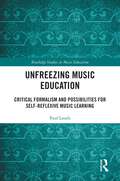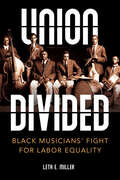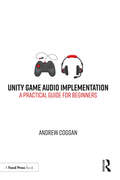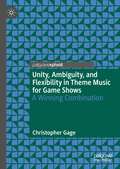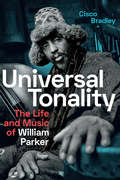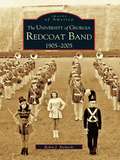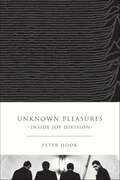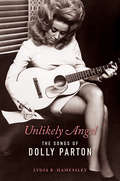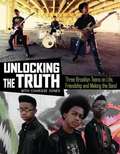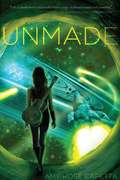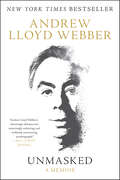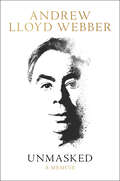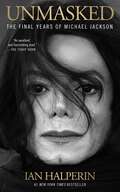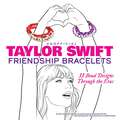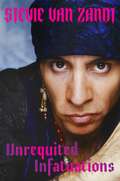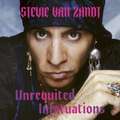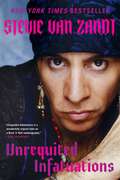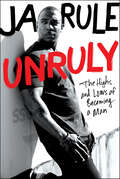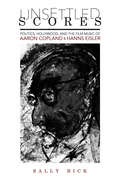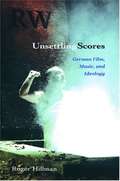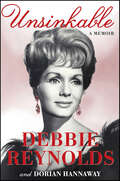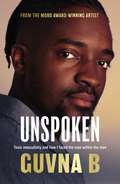- Table View
- List View
Unfinished History: A New Account of Franz Schubert's B Minor Symphony
by David MontgomeryThis study addresses a long-standing mythology concerning the "Unfinished" Symphony and reviews anachronistic performance practices that prevent listeners from experiencing the work as a product of its own time. David Montgomery’s Unfinished History challenges the traditional story of Franz Schubert’s B-minor Symphony and searches for a more credible account of this great work. Written for all Schubert lovers from lay readers to musicians and musicologists, the book reviews a strangely persistent mythology concerning the symphony, continuing with the first in-depth examination of its manuscript and related documents. Details of handwriting, notation, paper, watermarks, compositional procedures, and stylistic contexts suggest a new year and country of origin for the “Unfinished” Symphony, a possible explanation for the absence of a finale in the sketches, and an alternative account of the score’s disappearance and prolonged sequestration. The author concludes with an essay on performing the work in the context of its own times. The story of the Unfinished has been based partly upon three conflicting letters written in old age by Schubert’s former secretary long after the composer’s death. A fourth document in this insupportable mythology is a photograph of a lost letter purportedly sent from Schubert to the Styrian Music Society in Graz, promising to send them a symphony. Many historians still believe the letter to be genuine, despite the fact that its signature has been traced. David Montgomery’s handwriting analysis finally identifies the real writer of this odd missive, clearing a further path to new research.
Unfinished Journey
by Yehudi MenuhinThe autobiography of the accomplished and world-renowned violinist.
Unfreezing Music Education: Critical Formalism and Possibilities for Self-Reflexive Music Learning (Routledge Studies in Music Education)
by Paul LouthUnfreezing Music Education argues that discussing the conflicting meanings of music should occupy a more central role in formal music education and music teacher preparation programs than is currently the case. Drawing on the critical theory of the Frankfurt School, the author seeks to take a dialectical approach to musical meaning, rooted in critical formalism, that avoids the pitfalls of both traditional aesthetic arguments and radical subjectivity. This book makes the case for helping students understand that the meaning of musical forms is socially constructed through a process of reification, and argues that encouraging greater awareness of the processes through which music’s fluid meanings become hidden will help students to think more critically about music. Connecting this philosophical argument with concrete, practical challenges faced by students and educators, this study will be of interest to researchers across music education and philosophy, as well as post-secondary music educators and all others interested in aesthetic philosophy, critical theory, cultural studies, or the sociology of music and music education.
Union Divided: Black Musicians' Fight for Labor Equality (Music in American Life)
by Leta E. MillerAn in-depth account of the Black locals within the American Federation of Musicians In the 1910s and 1920s, Black musicians organized more than fifty independent locals within the American Federation of Musicians (AFM) in an attempt to control audition criteria, set competitive wages, and secure a voice in national decision-making. Leta Miller follows the AFM’s history of Black locals, which competed directly with white locals in the same territories, from their origins and successes in the 1920s through Depression-era crises to the fraught process of dismantling segregated AFM organizations in the 1960s and 70s. Like any union, Black AFM locals sought to ensure employment and competitive wages for members with always-evolving solutions to problems. Miller’s account of these efforts includes the voices of the musicians themselves and interviews with former union members who took part in the difficult integration of Black and white locals. She also analyzes the fundamental question of how musicians benefitted from membership in a labor organization. Broad in scope and rich in detail, Union Divided illuminates the complex working world of unionized Black musicians and the AFM’s journey to racial inclusion.
Unity Game Audio Implementation: A Practical Guide for Beginners
by Andrew CogganUnity Game Audio Implementation offers a unique, practical, project-based approach to learning about aspects of Interactive Game Audio for those who have never used a game engine before and don’t want to learn computer programming right now. The book offers insight into the skills needed to design game-ready sounds in current Digital Audio Workstation (DAW) and shows how to implement these sounds within the Unity game engine. The reader will also learn about interactive music and how to set this up to respond to a variety of events in the game, with the option of adding in their own story and dialogue. All the information is presented in a practical working context from an established Game Audio Sound Designer with AAA games experience. The chapters are accompanied by several game levels teaching all about the techniques and theories before offering instructive steps for how to put them into action. After completing the practical tasks in this book, not only will the reader create an interactive soundscape for a multilevel playable game featuring all their own audio, they will also receive tips on how to use their finished project in support of an application for Video Game Sound Designer jobs.
Unity, Ambiguity, and Flexibility in Theme Music for Game Shows: A Winning Combination
by Christopher GageWith flashing lights, bright colors, and big money, game shows have been an integral part of American culture since the days of radio. While the music that accompanies game shows is charming and catchy, it presents two unique, opposing challenges: first, it must exhibit unity in its construction so that, at any point and for any length of time, it is a tuneful, recognizable signifier of the show to which it belongs; at the same time, it must also possess the ability to be started and stopped according to the needs of gameplay without seeming truncated. This book argues that game show music, in particular from 1960 to 1990, deploys a variety of shared techniques in order to manage these two goals, including theme-derived vamps; saturation of motivic material; and harmonic, rhythmic, and formal ambiguity. Together, these techniques make game show themes exciting, memorable, and perfectly suited to their role.
Universal Tonality: The Life and Music of William Parker
by Cisco BradleySince ascending onto the world stage in the 1990s as one of the premier bassists and composers of his generation, William Parker has perpetually toured around the world and released over forty albums as a leader. He is one of the most influential jazz artists alive today. In Universal Tonality historian and critic Cisco Bradley tells the story of Parker’s life and music. Drawing on interviews with Parker and his collaborators, Bradley traces Parker’s ancestral roots in West Africa via the Carolinas to his childhood in the South Bronx, and illustrates his rise from the 1970s jazz lofts and extended work with pianist Cecil Taylor to the present day. He outlines how Parker’s early influences—Ornette Coleman, John Coltrane, Albert Ayler, and writers of the Black Arts Movement—grounded Parker’s aesthetic and musical practice in a commitment to community and the struggle for justice and freedom. Throughout, Bradley foregrounds Parker’s understanding of music, the role of the artist, and the relationship between art, politics, and social transformation. Intimate and capacious, Universal Tonality is the definitive work on Parker’s life and music.
University of Georgia Redcoat Band 1905-2005, The
by Robin J. RichardsThe University of Georgia Redcoat Marching Band has grown from 20 military cadets in 1905 to more than 350 musicians and auxiliary members performing complex and entertaining halftime shows all over the Southeast today. Throughout the past century the Redcoats have been invited to participate in every major bowl game in the country and in the inaugural parade of Jimmy Carter in 1977. The University of Georgia Redcoat Band: 1905-2005 covers the first 100 years of one of the finest musical organizations in America.
Unknown Pleasures: Inside Joy Division
by Peter HookIn Unknown Pleasures: Inside Joy Division, Peter Hook, bassist for the legendary, groundbreaking band Joy Division, takes readers backstage with the group that helped define the sound of a generation and influenced artists such as U2, Radiohead, and the Red Hot Chili Peppers.Unlike other books about Joy Division, Factory Records, or lead singer Ian Curtis—who took his own life just before the band's first U.S. Tour—Unknown Pleasures tells Joy Division's story from the unique perspective of one of the three surviving band members.Told with surprising humor and vivid detail, Unknown Pleasures is the book Joy Division fans have been waiting for.
Unlikely Angel: The Songs of Dolly Parton (Women Composers #13)
by Lydia R. HamessleyDolly Parton's success as a performer and pop culture phenomenon has overshadowed her achievements as a songwriter. But she sees herself as a songwriter first, and with good reason. Parton's compositions like "I Will Always Love You" and "Jolene" have become American standards with an impact far beyond country music. Lydia R. Hamessley's expert analysis and Parton’s characteristically straightforward input inform this comprehensive look at the process, influences, and themes that have shaped the superstar's songwriting artistry. Hamessley reveals how Parton’s loving, hardscrabble childhood in the Smoky Mountains provided the musical language, rhythms, and memories of old-time music that resonate in so many of her songs. Hamessley further provides an understanding of how Parton combines her cultural and musical heritage with an artisan’s sense of craft and design to compose eloquent, painfully honest, and gripping songs about women's lives, poverty, heartbreak, inspiration, and love. Filled with insights on hit songs and less familiar gems, Unlikely Angel covers the full arc of Dolly Parton's career and offers an unprecedented look at the creative force behind the image.
Unlocking the Truth
by Charisse Jones Ahmir Questlove" Thompson Unlocking The TruthA rock band on the cusp of massive stardom, Unlocking the Truth is made up of three thirteen-year-old African American boys: Malcolm, Jarad, and Alec. When not in school they spend their time as rock stars opening for the likes of Queens of the Stone Age, Motorhead, and Guns N' Roses, and crowd surfing at Coachella. They are currently working on their soon to be released debut EP. The key to their success: hard work, dedication, passion, and focus on their art.Part memoir and part guide book, the boys share the essential truths and principles, such as faith, determination and friendship, that led to their success and continue to drive them. The book will inspire and be a resource for kids looking to realize their own dreams, as well as parents who want to support their children's aspirations.
Unmade
by Amy Rose CapettaCadence is in a race against time and space to save her family and friends from the Unmakers, who are tracking the last vestiges of humanity across the cosmos. As the epic battle begins, Cade learns that letting people in also means letting them go. The universe spins out of control and Cade alone must face the music in the page-turning conclusion to Entangled.
Unmasked: A Memoir
by Andrew Lloyd Webber“Unmasked will tickle music and theater geeks. It’s an insider’s inside account, highly readable, thanks to Lloyd Webber’s affable, intelligent voice.” —USA TodayOne of the most successful and distinguished artists of our time, Andrew Lloyd Webber has reigned over the musical theatre world for nearly five decades. The winner of numerous awards, including multiple Tonys and an Oscar, Lloyd Webber has enchanted millions worldwide with his music and numerous hit shows, including Jesus Christ Superstar, Evita, Cats, The Phantom of the Opera—Broadway’s longest running show—and most recently, School of Rock. In Unmasked, written in his own inimitable, quirky voice, the revered, award-winning composer takes stock of his achievements, the twists of fate and circumstance which brought him both success and disappointment, and the passions that inspire and sustain him.A record of several exciting and turbulent decades of British and American musical theatre and the transformation of popular music itself, Unmasked is ultimately a chronicle of artistic creation. Lloyd Webber looks back at the development of some of his most famous works and illuminates his collaborations with luminaries such as Tim Rice, Robert Stigwood, Harold Prince, Cameron Mackintosh, and Trevor Nunn.Reflecting a life that included many passions (from architecture to Turkish Swimming Cats), full of witty and revealing anecdotes, and featuring cameo appearances by numerous celebrities—Elaine Paige, Sarah Brightman, David Frost, Julie Covington, Judi Dench, Richard Branson, A.R. Rahman, Mandy Patinkin, Patti LuPone, Richard Rodgers, Norman Jewison, Milos Forman, Plácido Domingo, Barbra Streisand, Michael Crawford, Gillian Lynne, Betty Buckley, and more—Unmasked at last reveals the true face of the extraordinary man beneath the storied legend.
Unmasked: A Memoir
by Andrew Lloyd WebberNew York Times Bestseller: From the Broadway legend, a “charmingly idiosyncratic, surprisingly endearing and ruthlessly entertaining autobiography” (The Wall Street Journal).Andrew Lloyd Webber has reigned over the musical theatre world for half a century. Here, in his own inimitable, quirky voice, the revered composer takes stock of his achievements, the twists of fate that brought both success and disappointment, and what inspires and sustains him. He reveals his artistic influences and reminisces about his bohemian London youth and the happiest place of his childhood: his homemade Harrington Pavilion—a make-believe world of musical theatre in which he created his earliest entertainments.A record of several exciting and turbulent decades of British and American musical theatre, Unmasked is ultimately a chronicle of artistic creation. Lloyd Webber looks back at the development of some of his most famous works and his collaborations with such luminaries as Tim Rice, Robert Stigwood, Harold Prince, Cameron Mackintosh, and Trevor Nunn. He reveals fascinating details about each of his productions: the cast of characters involved with making them, the creative and logistical challenges, and the artistic political battles.He recalls writing songs for a school production that would become his first hit, Joseph and the Amazing Technicolor Dreamcoat; finding the performers for his rock opera Jesus Christ Superstar; developing his first megahit, Evita, which would win seven Tony Awards; staking his reputation and fortune on the groundbreaking Cats; and making history with the dazzling The Phantom of the Opera.Reflecting a life of many passions (from architecture to Turkish Swimming Cats), full of witty and revealing anecdotes, and featuring cameos by many celebrities—Elaine Paige, Sarah Brightman, David Frost, Julie Covington, Judi Dench, Richard Branson, A.R. Rahman, Mandy Patinkin, Patti LuPone, Richard Rodgers, Norman Jewison, Milos Forman, Plácido Domingo, Barbra Streisand, Michael Crawford, Gillian Lynne, Betty Buckley, and more—Unmasked at last reveals the true face of the extraordinary man behind the legend.
Unmasked: The Final Years of Michael Jackson
by Ian HalperinIn late December 2008, Ian Halperin told the world that Michael Jackson had only six months to live. His investigations into Jackson's failing health made headlines around the globe. Six months later, the King of Pop was dead. Whatever the final autopsy results reveal, it was greed that killed Michael Jackson. Friends and associates paint a tragic picture of the last years and days of his life as Jackson made desperate attempts to prepare for the planned concert series at London's 02 Arena in July 2009. These shows would have earned millions for the singer and his entourage, but he could never have completed them, not mentally, and not physically. Michael knew it and his advisors knew it. Anyone who caught even a fleeting glimpse of the frail old man hiding beneath the costumes and cosmetics would have understood that the London tour was madness. Why did it happen this way? After an intense five year investigation, New York Times bestselling author Ian Halperin uncovers the real story of Michael Jackson's final years, a suspenseful and surprising thriller.
Unmasking What Matters: 10 Life Lessons From 10 Years on Broadway
by Sandra Joseph#1 International Best Seller Living a meaningful, satisfying life is an enigma for most people today. We feel stuck, small, without the self-confidence to move in the direction of what we really want. Or, if we do muscle through our fear in pursuit of our dreams, we exhaust ourselves working and striving and achieving and yet somehow, no matter our level of outer-world success, are left dazed and disheartened, asking ourselves, “Is this all there is?” After ten years on Broadway, Sandra Joseph—the longest-running leading lady in Broadway’s longest-running show, The Phantom of the Opera—knows one thing for sure: the only way to have a truly fulfilling life and achieve success that satisfies is to recognize that the journey up is no substitute for the journey in. In Unmasking What Matters, Joseph uses lessons learned on the road to Broadway, during her decade as Christine, and through the challenges she faced after walking away from the business to show readers how to courageously bring their inner voice to the outer world, stop seeking success for achievement’s sake and start creating the life they truly desire. With her hard-won wisdom, poignant personal stories, and practical, experiential exercises to guide them, readers will learn to shed their limiting masks, mindfully work through their fears, stand in their authentic power, and build a life rich with satisfaction, meaning, and significance. Warm, humble, encouraging, and inspiring, Unmasking What Matters can help anyone move from stuck, fearful, and playing it safe to embracing their passions, gifts, and opportunities and living life “full-out” today.
Unofficial Taylor Swift Friendship Bracelets: 33 Bead Designs Through the Eras
by Dover PublicationsAre you ready for it? The Unofficial Taylor Swift Friendship Bracelets guide is the ultimate resource for crafting your own stylish, Taylor Swift–inspired bracelets, perfect for swapping with fellow Swifties! This guide features 33 easy-to-make designs, complete with diagrams and vibrant full-color photographs. Each section offers a captivating overview of Taylor’s musical eras, along with 3 unique bracelet ideas that reflect each period’s album and aesthetic. Turn that one simple thread into a cherished keepsake, connecting you to your favorite moments in Taylor’s journey and your friendships with other Swifties!
Unrequited Infatuations: A Memoir
by Stevie Van Zandt'A wonderfully original take on a Rock and Roll autobiography' Paul McCartney'An inimitable Rock 'n' Roll life told as boldly as it was lived' Bruce SpringsteenWhat story begins in a bedroom in suburban New Jersey in the early '60s, unfolds on some of the country's largest stages, and then ranges across the globe, demonstrating over and over again how Rock and Roll has the power to change the world for the better? This story.The first true heartbeat of UNREQUITED INFATUATIONS is the moment when Stevie Van Zandt trades in his devotion to the Baptist religion for an obsession with Rock and Roll. Groups like the Beatles and the Rolling Stones created new ideas of community, creative risk, and principled rebellion. They changed him forever. While still a teenager, he met Bruce Springsteen, a like-minded outcast/true believer who became one of his most important friends and bandmates. As Miami Steve, Van Zandt anchored the E Street Band as they conquered the Rock and Roll world.And then, in the early '80s, Van Zandt stepped away from E Street to embark on his own odyssey. He refashioned himself as Little Steven, a political songwriter and performer, fell in love with Maureen Santoro who greatly expanded his artistic palette, and visited the world's hot spots as an artist/journalist to not just better understand them, but to help change them. Most famously, he masterminded the recording of "Sun City," an anti-apartheid anthem that sped the demise of South Africa's institutionalized racism and helped get Nelson Mandela out of prison.By the '90s, Van Zandt had lived at least two lives-one as a mainstream rocker, one as a hardcore activist. It was time for a third. David Chase invited Van Zandt to be a part of his new television show, the Sopranos-as Silvio Dante, he was the unconditionally loyal consiglieri who sat at the right hand of Tony Soprano (a relationship that oddly mirrored his real-life relationship with Bruce Springsteen).Underlying all of Van Zandt's various incarnations was a devotion to preserving the centrality of the arts, especially the endangered species of Rock. In the twenty-first century, Van Zandt founded a groundbreaking radio show (Underground Garage), a fiercely independent record label (Wicked Cool), and developed a curriculum to teach students of all ages through the medium of music history. He also rejoined the E Street Band for what has now been a twenty-year victory lap.UNREQUITED INFATUATIONS chronicles the twists and turns of Stevie Van Zandt's always surprising life. It is more than just the testimony of a globe-trotting nomad, more than the story of a groundbreaking activist, more than the odyssey of a spiritual seeker, and more than a master class in rock and roll (not to mention a dozen other crafts). It's the best book of its kind because it's the only book of its kind.
Unrequited Infatuations: A Memoir
by Stevie Van Zandt'A wonderfully original take on a Rock and Roll autobiography' Paul McCartney'An inimitable Rock 'n' Roll life told as boldly as it was lived' Bruce SpringsteenWhat story begins in a bedroom in suburban New Jersey in the early '60s, unfolds on some of the country's largest stages, and then ranges across the globe, demonstrating over and over again how Rock and Roll has the power to change the world for the better? This story.The first true heartbeat of UNREQUITED INFATUATIONS is the moment when Stevie Van Zandt trades in his devotion to the Baptist religion for an obsession with Rock and Roll. Groups like the Beatles and the Rolling Stones created new ideas of community, creative risk, and principled rebellion. They changed him forever. While still a teenager, he met Bruce Springsteen, a like-minded outcast/true believer who became one of his most important friends and bandmates. As Miami Steve, Van Zandt anchored the E Street Band as they conquered the Rock and Roll world.And then, in the early '80s, Van Zandt stepped away from E Street to embark on his own odyssey. He refashioned himself as Little Steven, a political songwriter and performer, fell in love with Maureen Santoro who greatly expanded his artistic palette, and visited the world's hot spots as an artist/journalist to not just better understand them, but to help change them. Most famously, he masterminded the recording of "Sun City," an anti-apartheid anthem that sped the demise of South Africa's institutionalized racism and helped get Nelson Mandela out of prison.By the '90s, Van Zandt had lived at least two lives-one as a mainstream rocker, one as a hardcore activist. It was time for a third. David Chase invited Van Zandt to be a part of his new television show, the Sopranos-as Silvio Dante, he was the unconditionally loyal consiglieri who sat at the right hand of Tony Soprano (a relationship that oddly mirrored his real-life relationship with Bruce Springsteen).Underlying all of Van Zandt's various incarnations was a devotion to preserving the centrality of the arts, especially the endangered species of Rock. In the twenty-first century, Van Zandt founded a groundbreaking radio show (Underground Garage), a fiercely independent record label (Wicked Cool), and developed a curriculum to teach students of all ages through the medium of music history. He also rejoined the E Street Band for what has now been a twenty-year victory lap.UNREQUITED INFATUATIONS chronicles the twists and turns of Stevie Van Zandt's always surprising life. It is more than just the testimony of a globe-trotting nomad, more than the story of a groundbreaking activist, more than the odyssey of a spiritual seeker, and more than a master class in rock and roll (not to mention a dozen other crafts). It's the best book of its kind because it's the only book of its kind.
Unrequited Infatuations: A Memoir
by Stevie Van ZandtUncover never-before-told stories in this epic tale of self-discovery by a Rock n Roll disciple and member of the E Street Band. <p><p> What story begins in a bedroom in suburban New Jersey in the early '60s, unfolds on some of the country's largest stages, and then ranges across the globe, demonstrating over and over again how Rock and Roll has the power to change the world for the better? This story. <p><p> The first true heartbeat of Unrequited Infatuations is the moment when Stevie Van Zandt trades in his devotion to the Baptist religion for an obsession with Rock and Roll. Groups like the Beatles and the Rolling Stones created new ideas of community, creative risk, and principled rebellion. They changed him forever. While still a teenager, he met Bruce Springsteen, a like-minded outcast/true believer who became one of his most important friends and bandmates. As Miami Steve, Van Zandt anchored the E Street Band as they conquered the Rock and Roll world. And then, in the early '80s, Van Zandt stepped away from E Street to embark on his own odyssey. He refashioned himself as Little Steven, a political songwriter and performer, fell in love with Maureen Santoro who greatly expanded his artistic palette, and visited the world’s hot spots as an artist/journalist to not just better understand them, but to help change them. Most famously, he masterminded the recording of “Sun City,” an anti-apartheid anthem that sped the demise of South Africa’s institutionalized racism and helped get Nelson Mandela out of prison. <p><p> By the '90s, Van Zandt had lived at least two lives—one as a mainstream rocker, one as a hardcore activist. It was time for a third. David Chase invited Van Zandt to be a part of his new television show, the Sopranos—as Silvio Dante, he was the unconditionally loyal consiglieri who sat at the right hand of Tony Soprano (a relationship that oddly mirrored his real-life relationship with Bruce Springsteen). Underlying all of Van Zandt's various incarnations was a devotion to preserving the centrality of the arts, especially the endangered species of Rock. <p><p> In the twenty-first century, Van Zandt founded a groundbreaking radio show (Little Steven's Underground Garage), created the first two 24/7 branded music channels on SiriusXM (Underground Garage and Outlaw Country), started a fiercely independent record label (Wicked Cool), and developed a curriculum to teach students of all ages through the medium of music history. He also rejoined the E Street Band for what has now been a twenty-year victory lap. Unrequited Infatuations chronicles the twists and turns of Stevie Van Zandt’s always surprising life. It is more than just the testimony of a globe-trotting nomad, more than the story of a groundbreaking activist, more than the odyssey of a spiritual seeker, and more than a master class in rock and roll (not to mention a dozen other crafts). It's the best book of its kind because it's the only book of its kind.
Unruly: The Highs and Lows of Becoming a Man
by Ja RuleJa Rule, actor, singer, songwriter, and one of the most multi-dimensional rap artists of his time, tells his compelling story—from his youth to his rise to international fame to his transformative two years in Federal prison—and reveals the man beneath the legend.Unruly is two stories that offer one complete picture of a man and his world: the angry, fatherless rapper, Ja Rule who was “raised by the streets”; and Jeffrey Atkins, the insightful, reflective father and loyal husband who learned the hard way how to be a good man.Filled with never-before-revealed anecdotes and sixteen pages of black-and-white photos, Unruly shows the determination that it takes to become a man in today’s society. Ja Rule considers the lack of role models for many young black men today—a void that leads to bad choices and the wrong paths. Recalling his youth, he illuminates the seductive pull of the streets and the drug dealers who were his earliest role models.Jeffrey Atkins offers practical wisdom—reflection, growth and hope learned first-hand as an inmate, father, husband, and community role model. He speaks fondly of men who inspired Unruly—the inmates he met in prison whose misguided ideas of masculinity landed them behind bars—and Louis Farrakhan who mediated the televised encounter with Ja Rule’s adversary, 50 Cent.Unruly is a compelling, personal look at the duality and conflicts that arise in the African-American male psyche from a man who has enjoyed breathtaking fame and suffered heartbreaking misfortune.
Unsettled Scores: Politics, Hollywood, and the Film Music of Aaron Copland and Hanns Eisler (Music in American Life #489)
by Sally BickThe Hollywood careers of Aaron Copland and Hanns Eisler brought the composers and their high art sensibility into direct conflict with the premier producer of America's potent mass culture. Drawn by Hollywood's potential to reach—and edify—the public, Copland and Eisler expertly wove sophisticated musical ideas into Hollywood and, each in their own distinctive way, left an indelible mark on movie history. Sally Bick's dual study of Copland and Eisler pairs interpretations of their writings on film composing with a close examination of their first Hollywood projects: Copland's music for Of Mice and Men and Eisler's score for Hangmen Also Die! Bick illuminates the different ways the composers treated a film score as means of expressing their political ideas on society, capitalism, and the human condition. She also delves into Copland's and Eisler's often conflicted attempts to adapt their music to fit Hollywood's commercial demands, an enterprise that took place even as they wrote hostile critiques of the film industry.
Unsettling Scores: German Film, Music, and Ideology
by Roger Hillman"Hillman's groundbreaking study enables both serious and casual film students to approach these works with sharpened vision and improved hearing." --Klaus Phillips, Hollins UniversityUnsettling Scores: German Film, Music, and Ideology examines the use of classical music in film, particularly in the New German Cinema of the 1970s and early 80s. By integrating the music of Beethoven, Mahler, and others into their films, directors such as Fassbinder, Kluge, and Syberberg consciously called attention to its cultural significance. Through this music their films could reference and, in some cases, explore an embedded cultural tradition that included German nationalism and the rise of Nazism, especially during a period when German films were gaining international attention for the first time since the 1920s. Classical music conditioned the responses of German audiences and was, in turn, reinterpreted in new cinematic contexts. In this pioneering volume, Hillman enriches our understanding of the powerful effects of music in cinema and the aesthetic and dramatic concerns of postwar German filmmakers.
Unsinkable: A Memoir
by Debbie Reynolds Dorian HannawayUnsinkable is the definitive memoir by film legend and Hollywood icon Debbie Reynolds.In Unsinkable, the late great actress, comedienne, singer, and dancer Debbie Reynolds shares the highs and lows of her life as an actress during Hollywood’s Golden Age, anecdotes about her lifelong friendship with Elizabeth Taylor, her experiences as the foremost collector of Hollywood memorabilia, and intimate details of her marriages and family life with her children, Carrie and Todd Fisher.A story of heartbreak, hope, and survival, “America’s Sweetheart” Debbie Reynolds picks up where she left off in her first memoir, Debbie: My Life, and is illustrated with previously unpublished photos from Reynolds’s personal collection.Debbie Reynolds died on December 28, 2016, at the age of 84, just one day after the death of her daughter, actress and author Carrie Fisher.
Unspoken: Toxic Masculinity and How I Faced the Man Within the Man
by Guvna BMen are bold. Men are brave. Men are strong in the face of fear. But what happens when that strength crumbles? Growing up on a council estate in East London, rapper Guvna B thought he knew everything he needed to know about what it means to be a man. But when a personal tragedy sent him reeling, he knew he had to face these assumptions head on if he was going to be able to overcome his grief. In this intimate, honest and unflinching memoir, Guvna B draws on his personal experiences to explore how toxic masculinity affects young men today. Exploring ideas of male identity, UNSPOKEN is an inspirational account of Guvna’s journey.
